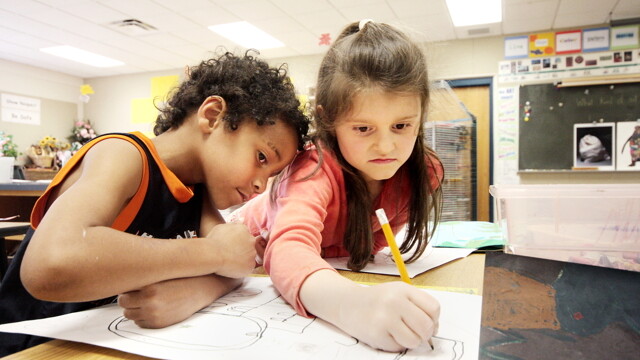To loop or not to loop?
the debate rages on about whether cursive is still a useful skill to be taught in schools

As a substitute teacher, I recently found myself greeting a bubbling classroom of second graders as their teacher for the day. While attempting to control the flurry of raised hands and questions and concerns, I quickly scrawled “Mrs. Nelson” on the whiteboard in a mix of cursive and print. One little girl was not pleased.
“You said your name was Mrs. Nelson,” she stated matter-of-factly. “But you wrote Mrs. Melsom. Don’t you know how to write?” she inquired. I explained I was writing in cursive, to which I received a few nods of understanding, a couple “whaaaat?s,” but mostly a general “we-know-of it-but-don’t-know-what-it-means-and-won’t-‘til-third-grade” sort of reply.
While filling D’Nealian method books with swirling s’s and erasing numerous failed z’s seems to me a rite of passage in elementary school, most students I work with today – even in classes beyond grade three – appear to avoid cursive like the plague. In the various classrooms and grades and schools I visit, cursive is all but extinct.
The art of handwriting seems to be losing popularity in areas other than just the Chippewa Valley. In fact, though previous national guidelines required the teaching of cursive, recent standards now leave the decision to teach cursive up to individual states.
The art of handwriting seems to be losing popularity in areas other than just the Chippewa Valley. In fact, though previous national guidelines required the teaching of cursive, recent standards now leave the decision to teach cursive up to individual states. While many states like neighboring Minnesota choose to continue the practice on a significantly smaller scale than in years past, many states opt out of teaching cursive altogether. With the pressures of standardized testing and the growing demand for applicable, “real-life” learning, time is considered better spent teaching skills like keyboarding and online researching.
In the Eau Claire Area School District, cursive still remains part of the curriculum – for now, at least. Though currently under committee review, at the present time students in Eau Claire schools receive cursive handwriting instruction in the third grade, with reinforcements in grades four and five. Kris Dimock, director of Pre K/Elementary Teaching and Learning for ECASD, reaffirmed the area’s commitment to cursive.
“At this time, we are planning on continuing this model of instruction, although the work of the committee may make changes to when the instruction occurs for both handwriting and keyboarding based on their work,” she said. She added cursive instruction will continue into the foreseeable future for students in Eau Claire schools.
Once considered a privilege and a sign of success, writing in cursive is now the controversial subject of hot debates on scores of websites, educational blogs, and in school board meetings. Many proponents of cursive highlight studies that show cursive can increase a student’s ability to think critically as well as aid in artistic expression; while others retort that handwriting is an outdated and unnecessary practice in a world dominated by electronics, and what positive effects it has can be made up for with more art class time.
Shirley Ruesch, eighth grade English and Learning Resource teacher at South Middle School, sees both sides of the debate. “It really is a dying art,” she said. “I’d like to see kids using it, but I’m just not sure where they will need it in the future. You can even sign documents online now by just typing, and most assignments students turn in are processed.”
As the world moves further away from handwriting and deeper into the world of technology, the future of cursive looks grim. While still prevalent in some areas, cursive is losing ground – fast. In this electronically focused, 21st century world, when we face the whiteboards of life, will we still make our mark with fancy scrawls and easily read the loops? Or will we find ourselves questioning, “Who’s Mrs. Melsom?”


















